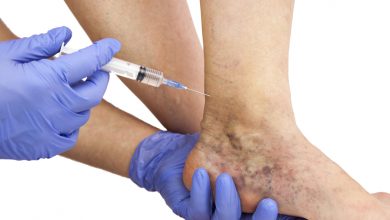Health
What Is Melanoma Skin Cancer Treatment By Stage?
Being diagnosed with melanoma is life changing. Some of the main questions a person has is what stage is my melanoma? Has it spread? What are my treatment options?
Only your doctor can answer the first two questions. We can help you with understanding your treatment options based on the stage of melanoma. Keep reading to find out more.
Stage 0
Being diagnosed with stage 0 melanoma is the best case scenario if you are diagnosed. This means that the melanoma has not grown deeper than the upper layer of skin. Normally, this is treated by surgically removing the melanoma and the some of the normal skin surrounding it.
After the removal of the melanoma, the sample is sent to a lab for further investigation. If pathologists find additional cancer cells surrounding the edges of the sample, then another surgery will be done to remove the remaining cancerous area.
Some doctors prefer using imiquimod cream (Zyclara) or radiation therapy rather than surgery. For melanomas in sensitive areas on the face, some physicians may use Mohs surgery or even imiquimod cream. Especially if the operation may disfigure the patient.
Stage 1
The standard treatment for stage 1 melanoma is the same as stage 0. This is to surgically remove the melanoma and a margin of the normal skin that surrounds it. The amount of the margin depend on the location and thickness of the melanoma.
Many doctors will want to perform a sentinel lymph node (SLNB) biopsy. This will look for cancer in nearby lymph nodes. This is especially needed if the melanoma is in stage IB. Or if the doctor believes the melanoma has other characteristics that make it likely to spread. If this biopsy comes back positive, then a lymph node dissection is recommended. A doctor might also recommend a immune checkpoint inhibitor or targeted therapy drug. This can help decrease the chances of the return of the melanoma.
Stage 2
Stage 2 melanoma is treated the exact same way as Stage 1.
The first line of defense is surgically removing the melanoma and the skin surrounding it. Once this is done, your doctor will request that you perform a sentinel lymph node biopsy (SNLB). This biopsy of the lymph nodes will be analyzed. If the biopsy comes back positive, a lymph node dissection is recommended. In some cases a doctor might recommend a immune checkpoint inhibitor or targeted therapy drug. This can help decrease the chances of the return of the melanoma.
Stage III
Once melanoma has reached stage 3, the melanoma has become more serious and aggressive. In stage 3 melanoma, the cancer has already reached the lymph nodes. This is why surgery is required during stage 3. Surgery will help remove the affected lymph nodes and the tumor.
Other non – surgical options include:
- Radiation Therapy
- Targeted therapy drugs
- Immune Checkpoint inhibitor
If the biopsy reveals that the melanoma tumors are in nearby lymph vessels or under the skin, they need to be removed. Some methods or removal are:
- T-VEC vaccine
- Bacille Calmette-Guerin (BCG) vaccine
- Interleukin-2 injection
- radiation therapy
- imiquimod cream.
If melanoma is diagnosed on the arm some treatment options are:
- Isolated limb perfusion
- Isolated limb infusion (infusing the limb with chemotherapy).
- Targeted therapy
- Chemotherapy
- Immunotherapy
In some cases, patients with stage 3 melanoma cannot be cure with the current treatments available. This is when they should think about taking part in clinical trials for newer treatments.
Stage 4
Stage 4 melanoma is very serious. It means that the cancer has spread to lymph nodes that are farther away. The best way to cure these types of spread are surgically or treatment with radiation therapy.
In some cases the cancer spreads within the internal organs. Sometimes it can be surgically removed; however, in most cases when the melanoma spreads to the internal organs it cannot be surgically removed. It also does not respond to radiation, immunotherapy, targeted therapy, or chemotherapy.
In recent years, the treatment for widespread melanoma has changed. This is because there are newer forms of immunotherapy and targeted therapy.
- Immunotherapy
- Checkpoint Inhibitors – Can help shrink tumors for extended periods of time. Some examples of these drugs are nivolumab, Ipilimumab, and pembrolizumab.
- Targeted Therapy
- BRAF inhibitor and MEK inhibitor – These treatments are good when the cancer cells have changes in the BRAF gene.
There is a small number of melanoma cases that have changes in the C-KIT gene. In these cases, targeted drugs can help. The downside is that these drugs will stop working at some point.
Stage 4 melanoma is hard to cure. Because of this reason, many patients turn to clinical trials. Many of these clinical trials focus on targeted drugs, chemotherapy drugs, combination treatments and targeted therapy.
Final Thought
Whichever stage of melanoma an individual is diagnosed, it is still difficult to absorb. The best thing to do is to educate yourself on the different treatment options per stage.




